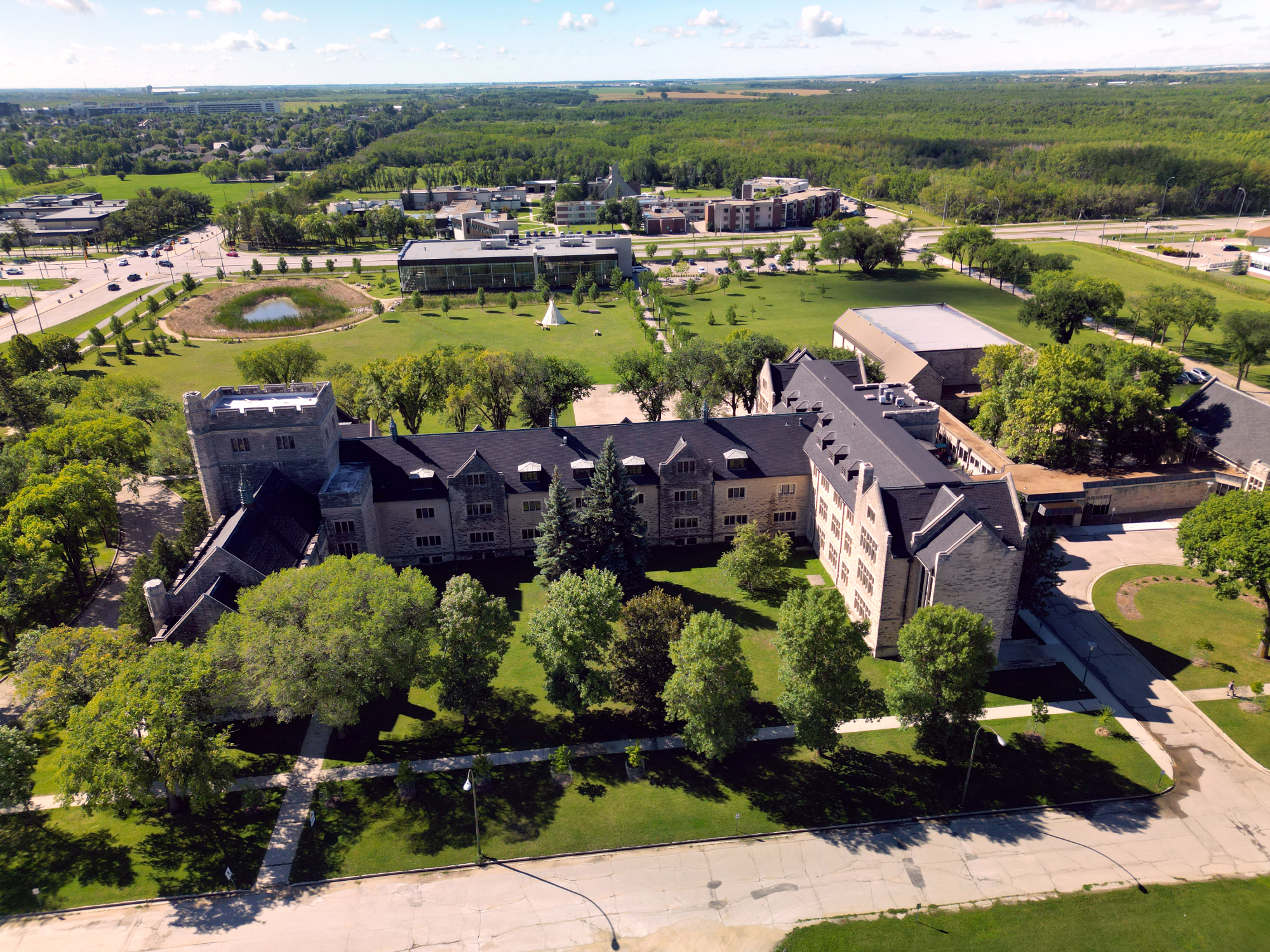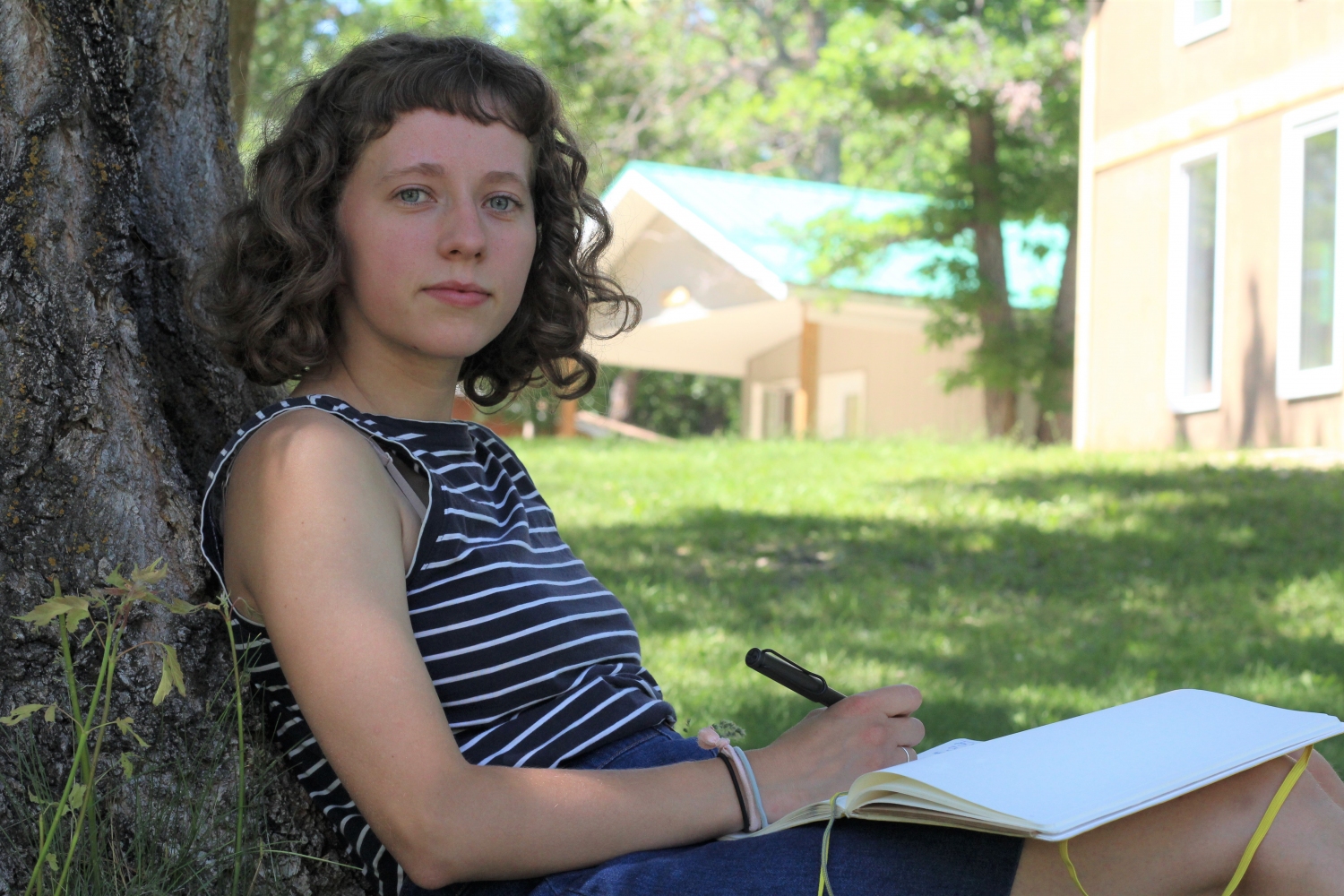News and Releases

Student Profiles
Practicum student captures camp life through poetry
Thursday, September 12, 2019 @ 8:45 AM | Student Profiles
 Nadya Langelotz: "I feel really lucky to be able to engage intellect and education with faith and my dreams and passions and weave those all together in a really interesting way."
Nadya Langelotz: "I feel really lucky to be able to engage intellect and education with faith and my dreams and passions and weave those all together in a really interesting way."
When Nadya Langelotz decided to direct a summer camp, she thought it would require putting on hold one of her biggest passions: writing.
It was while working at the end of last semester in CMU's printing press, located in one of CMU's castle-like towers, that the fifth-year English major lamented to her friend that she wouldn't have time to write during the busy schedule of camp. When her friend suggested doing it as a practicum at camp, Langelotz doubted it would work. How could writing and camp go together?
To her surprise, CMU helped her make it happen. "It's another way that CMU shows its adaptability and flexibility," she says. Even though the university doesn't offer a major in creative writing, instead of telling her "we can't help you" or "you can study that after your undergrad," she says they wanted to make it work within their existing structure because she was excited about it.
Langelotz's practicum emerged as a project writing poetry and nonfiction both individually and collaboratively while being a Summer Program Director at Camp Assiniboia, near Headingley, Manitoba.
.JPG)
things you can pile high: napkins /
songs, and all the times /
laughter woke to break silence
One example of her work was creating inverse haikus (seven syllables, five syllables, seven syllables instead of the traditional five-seven-five) that documented life at camp, sourcing her words from campers and staff. She shared the poems, along with a picture from camp, through her Instagram account, @themarmot_writes.
Often times camp staff share memories in hindsight, long after camp is over, whereas Langelotz's writing happened while they were still deeply immersed in it all. "It feels more like a real-time representation of how we feel when we're here and the things we observe about campers, the ways we see God dance in between the structures of the day."
"Sue suggested an Instagram account as a way of making my writing more of a social act," says Langelotz of her practicum supervisor, Sue Sorensen, Associate Professor of English at CMU. "She encouraged me to remind myself that as much as writing is an individual, isolated act, it shouldn't be – there is something social and community-based about it. It's a really not intimidating introduction into having other people read what I write."
Langelotz also shared her writing with Sorensen, sending her pictures of her writing journal every week and periodically meeting in person, to which Sorensen responded with feedback and her own writing, as a way of reciprocating the vulnerability that comes with sharing writing. "It's like a little mini writing group but also a friendship, because inevitably our writing is about things that are happening in our lives and so it's personal," says Langelotz.
 June sighs cumulus clouds, and /
June sighs cumulus clouds, and /this fierce family /
reminds me what light feels like
She values the relationships CMU fosters between students and faculty. "I think the most exciting thing is just being supported," she says. "I know I feel supported by my professors at CMU when I'm in my classes, but this is a way I still feel connected to school throughout summer."
This fall she will do the slow work of rereading all her writing and compiling it in a book which she will create and bind by hand in CMU's printing press. She will give the volumes as gifts to the faculty that mentored her and the church's camping ministry that profoundly shaped her.
"I feel really lucky to be able to engage intellect and education with faith and my dreams and passions and weave those all together in a really interesting way."
KEYWORDS: student profile, practicum, Work-Integrated Learning, practica, Nadya Langelotz, Ens CCV

 Print This Article
Print This Article